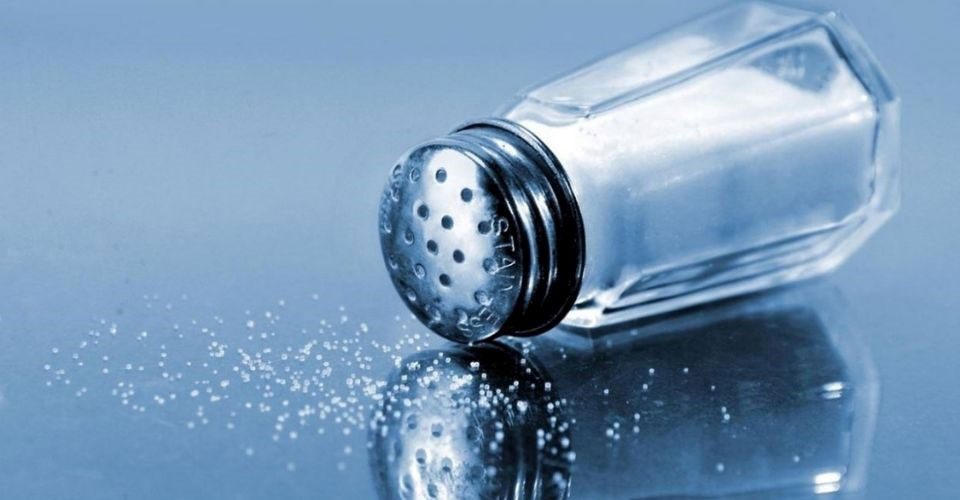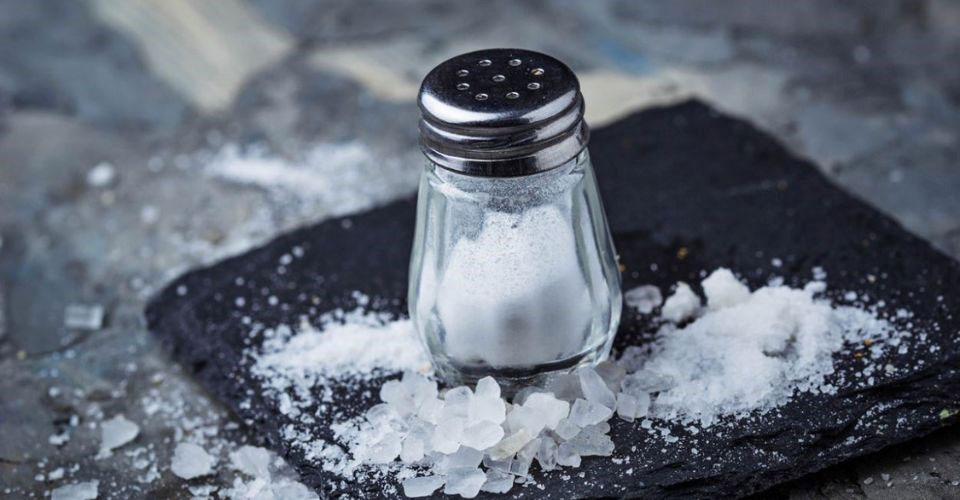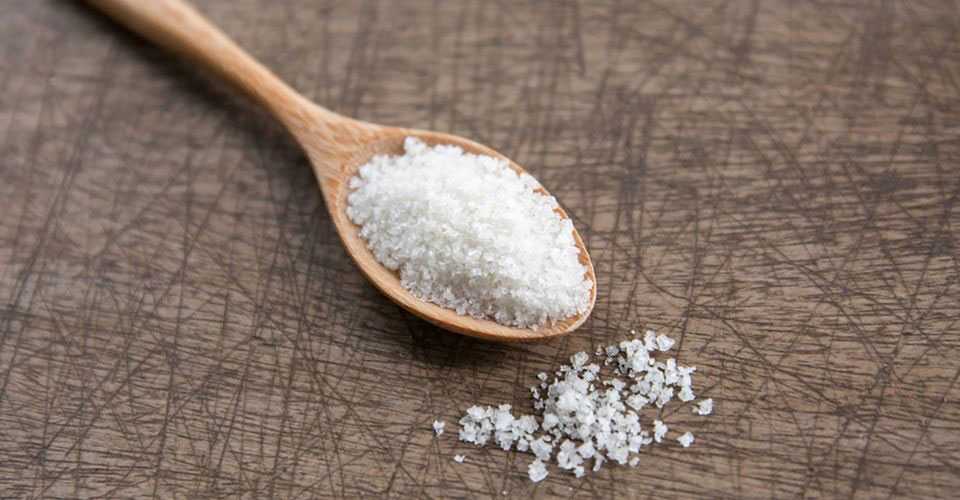One of the most important elements for both human and animal health is salt, commonly known as sodium chloride. It is more than simply an important pantry staple.
As well as being essential for nerve and muscle function, sodium also aids in maintaining the fluid equilibrium in your body.
When purchasing table salt from the shelves, you have two options: iodized salt or non-iodized salt.
In this article, let’s discover which one is better!

Iodized or non-iodized salt?
What Is Iodized Salt?
Salt that has iodine added to it is known as iodized salt. Iodine is a trace mineral that can be found in small amounts in some foods like vegetables, eggs, and seafood.
Since iodine is only present in trace amounts in foods, table salt is frequently supplemented with iodine to prevent iodine deficiency.

Iodized salt
What Is Non Iodized Salt?
Non-iodized salt is salt that hasn't had iodine added to it. It is made up of sodium and chloride instead. Even so, after being gathered, table salt is still processed.
Table salt may be mixed with various additives and anti-caking agents, including silicon dioxide, magnesium carbonate, and sodium aluminosilicate, throughout this procedure.
Therefore, other ingredients that improve the taste and lengthen the shelf life may be included in the production even if iodine is not added.

Non-iodized salt
What Are The Differences Between Iodized And Non-Iodized Salt?
There are several distinctions between these two types of salt:
Composition
What makes iodized salt different from regular salt?
The fundamental distinction between these two can be noticed in the definition: Iodized salt contains iodine.
It is crucial for thyroid health and its presence in salt has significantly decreased the incidence of iodine shortage and the associated health problems.
Non-iodized salt, on the other hand, does not offer such health advantages.
Flavor
Some individuals may taste the iodine in iodized salt, yet the majority cannot.
Also, Iodine imparts a harsh aftertaste of salt for certain people, which alters the flavor of food. Its flavor is most easily detected in foods with a delicate flavor profile.
Texture
Non-iodized salt can have a range of textures, whereas iodized salt is fine-grained and free-flowing.

These two salts have a relatively different texture
Price
Iodized salt is relatively cheap. On the other hand, non-iodized salt can range in price from less expensive options like kosher salt to more expensive French sea salts.
What Is Healthier: Iodized Or Non-Iodized Salt?
It may be simple to conclude that iodized salt is healthier given that it includes an additional nutrient that all humans require.
However, the worst part is that most individuals consume enough iodine in their foods.
Except for pregnant women, who require about 220 mcg, or those who are iodine deficient, all adults require about 150 micrograms (mcg) of iodine per day.
Just one cup of low-fat yogurt and three ounces of cod each provide you with 50% and almost 70% of the iodine you need each day, respectively.

Iodized salt seems to be healthier
When To Use Iodized And Non-Iodized Salt?
Iodized salt is suitable for use as regular table salt for cooking, flavoring, and seasoning. It quickly dissolves in food and aids in completing your diet's required iodine consumption.
When it comes to iodized salt, Tata Salt is famous as a pioneer of salt iodization in India. It is a product with a decent flavor at a fair price. Just a small bit of this salt will provide the ideal flavor.

Tata salt is iodized
For specific uses, such as when you require texture or finishing touches to complement your cuisine, keep non-iodized salt on hand.
In most cases, you can substitute iodized salt for non-iodized salt and still get the desired flavor.
But there are many different kinds of salt, including pickling salt, kosher salt, and pink Himalayan salt.
So, Iodized table salt is not a good alternative when you need the unique flavor, texture, color, or grain size of certain kinds of non-iodized salts.
Although it originates from a natural source and has other minerals, iodine is not present in sea salt.
Whereas pink Himalayan salt might naturally include some iodine, it most probably has less than iodized salt.
Final Words
Finally, both non-iodized salt and ordinary salt are necessary for their nutritional advantages and savory seasoning meals to increase flavor. Reading this post, we hope you are clear about their differences and when to use iodized and non-iodized salt for the best result!
![Iodized Salt vs Sea Salt Comparison [Nutrition, Taste, Cost & More]](https://barcodelive.org/filemanager/data-images/imgs/20230328/Tip_Iodized%20Salt%20Vs%20Sea%20Salt_1.jpg)

![Whole Wheat vs Whole Grain Diabetes: What Is Better? [Solved]](https://barcodelive.org/filemanager/data-images/imgs/20230217/News_Whole%20Wheat%20vs%20Whole%20Grain%20Diabetes_1.jpg)
12 Comments
Daanish Zachariah
Whenever I use iodized salt, there's an off taste that's sort of metallic. I've had people swear that there's no difference and tell me I'm crazy. What do you think?
Leave a Comment
Your email address will not be published. Required fields are marked *Harry Taylor
I've had people tell me that "Nu-Salt" (potassium chloride) tastes the same as "salt"... some people just don't have the same range of tastes, or they don't care about the differences in taste enough to think about it
Leave a Comment
Your email address will not be published. Required fields are marked *Grace Davies
Not only can I tell the difference, if my family buy non-iodized salt I slowly have a bad thyroid reaction
Leave a Comment
Your email address will not be published. Required fields are marked *Akshay More
I think they both taste terrible, thats why I only use pink salt. Threw away the white salt years ago.
Leave a Comment
Your email address will not be published. Required fields are marked *Nathan Clarke
Iodized salt , to me, has a metallic taste . I dont use it at all
Leave a Comment
Your email address will not be published. Required fields are marked *Shirley Bell
I've run out of aqua salt and I need some salt to prevent qrowth of parasites. So can I use non ionized table salt. Will I also be able to use rock salt as an alternative for now.
Leave a Comment
Your email address will not be published. Required fields are marked *Baldev
I saw someone recently suggest rock salt. Where I am rock salt is often contaminated with other substances (but I guess it depends on what it's sold for). I would never use it. I have also read that people use table salt that has no idodine or other additives. But, do i know there are no other additives in it? Table salt is still processed after they "harvest" it and they can add thigs like anti-caking agents. I'd have to look them up and see if they were ok for aquariums. Silicon dioxide is ok. But, yellow prussiate of soda is toxic I believe.
Leave a Comment
Your email address will not be published. Required fields are marked *Cynthia Scott
Oh. I've used it before once and had no problems. But It was on a small tank
Leave a Comment
Your email address will not be published. Required fields are marked *Gayatri Kaul
Is sea salt the same as non-iodized salt? I just got a belly piercing but I only have plain non- iodized salt. Can I use that?
Leave a Comment
Your email address will not be published. Required fields are marked *Barcodelive
Yes, plain salt, even iodized salt would work to make some normal saline solution. Some people are of the opinion that sea salt is healthier, but the fact is, our bodies don’t care where the sodium we require comes from. Since you’re making a topical solution, it matters even less.
Leave a Comment
Your email address will not be published. Required fields are marked *lily robinson
Awesome stuff as always
Leave a Comment
Your email address will not be published. Required fields are marked *Barcodelive
Thanks
Leave a Comment
Your email address will not be published. Required fields are marked *Leave a Comment
Your email address will not be published. Required fields are marked *